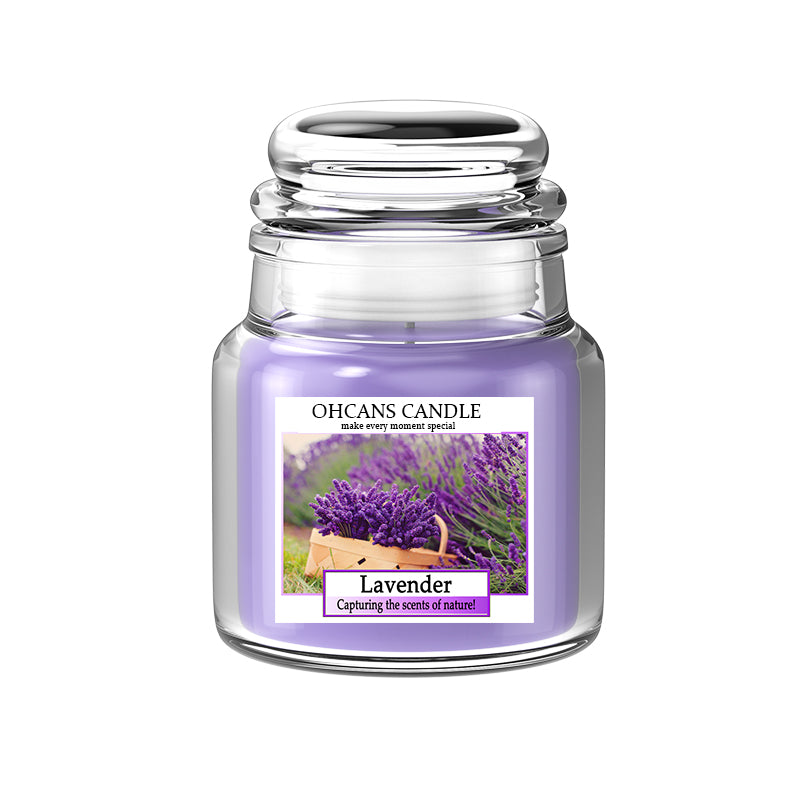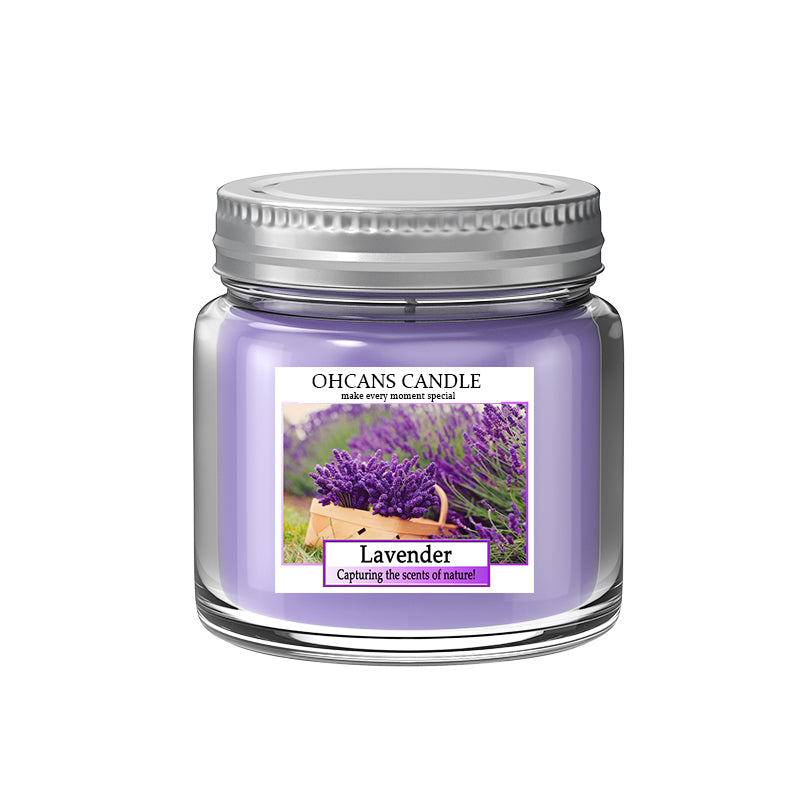The Ultimate Guide to Paraffin Wax Candles
Exploring Paraffin Wax Candles
Welcome to the ultimate guide to paraffin wax candles! In this section, we will delve into the fascinating world of paraffin wax candles, exploring their creation, health concerns, safety measures, and alternative options. Whether you're a DIY enthusiast, a candle lover, or simply curious about candle-making, this blog is for you.
Paraffin wax candles are one of the most popular types of candles made from paraffin wax. Paraffin wax is derived from petroleum and is commonly used in candle-making due to its affordability and versatility. These candles offer a wide range of options for those who enjoy creating their own unique scents and designs.
However, it's important to be aware of the potential health concerns associated with paraffin wax candles. Some studies suggest that burning paraffin candles may release toxins and soot into the air, which can contribute to indoor air pollution. This has raised concerns about respiratory issues and allergic reactions in some individuals.
To ensure safe usage of paraffin wax candles, it's crucial to follow proper safety measures. This includes proper ventilation when burning candles indoors and choosing high-quality candles that have been tested for safety. Additionally, it's essential to consider alternative options if you have specific health concerns or prefer more natural alternatives.
In the following sections of this blog post, we will provide a step-by-step guide on making paraffin wax candles, discuss the potential health risks associated with their use, explore fire safety precautions, and introduce alternative options such as soy wax and beeswax candles. So let's dive deeper into the world of paraffin wax candles and discover all there is to know!

What Are Paraffin Wax Candles?
Understanding Paraffin Wax Candles
Paraffin wax candles are a type of candle made from paraffin wax, which is derived from petroleum. This type of wax is commonly used in candle-making due to its affordability and availability. Paraffin wax is a byproduct of the crude oil refining process and has been used for candle production for many years.
The composition of paraffin wax candles typically includes a blend of paraffin wax, additives, and a wick. The exact composition may vary depending on the specific candle manufacturer and desired characteristics of the candle.
Advantages and Disadvantages
Paraffin wax candles offer several advantages that make them popular among DIY enthusiasts and candle lovers. One of the main benefits is their affordability, as paraffin wax is relatively inexpensive compared to other types of waxes. This makes it an accessible option for those who enjoy making their own candles at home.
Another advantage of paraffin wax candles is their versatility. Paraffin wax can be easily colored and scented, allowing for endless possibilities when it comes to creating unique candle designs and fragrances. Additionally, paraffin wax has a high melting point, which means that these candles tend to burn slowly and last longer compared to some other types of candles.
However, it's important to consider the potential drawbacks and health concerns associated with paraffin wax candles. One concern is that burning paraffin candles may release toxins and soot into the air, contributing to indoor air pollution. This can be particularly problematic for individuals with respiratory issues or allergies.
To mitigate these concerns, it's recommended to burn paraffin wax candles in well-ventilated areas and avoid prolonged exposure to the smoke they produce. Additionally, choosing high-quality candles that have been tested for safety can help minimize potential health risks.

Step-by-Step Guide to Making Paraffin Wax Candles
Gathering Materials and Equipment
Before you begin the candle-making process, it's essential to gather all the necessary materials and equipment. Here is a list of items you'll need for making paraffin wax candles:
-
Paraffin wax: Choose high-quality paraffin wax specifically designed for candle-making. The amount needed will depend on the size and number of candles you plan to make.
-
Wick: Select a wick suitable for your candle size. Pre-tabbed wicks are convenient as they come with metal tabs attached, making them easier to secure in the candle.
-
Fragrance oil: If desired, choose fragrance oils that are compatible with candles. There are various scents available, allowing you to customize your candles' aroma.
-
Candle dye or color blocks: To add color to your candles, opt for candle-specific dyes or color blocks. These can be melted along with the wax.
-
Heat-resistant container or mold: Depending on your preferred candle design, you'll need containers or molds to pour the melted wax into. Ensure they are heat-resistant and appropriate for candle-making.
-
Double boiler or melting pot: Use a double boiler setup or a dedicated melting pot to melt the paraffin wax safely. Avoid direct heat sources as they can be hazardous.
-
Thermometer: A thermometer is crucial for monitoring the temperature of the melted wax during the pouring process.
In addition to these materials, gather other essential tools such as a stirring utensil (e.g., a wooden spoon), adhesive tape (for securing wicks), and a heat source (e.g., stove or hot plate).

Step-by-Step Instructions
Now that you have all your materials ready, let's dive into the step-by-step process of making paraffin wax candles:
-
Prepare your workspace: Find a clean and well-ventilated area where you can safely work on your DIY candle crafting project.
-
Melt the paraffin wax: Using a double boiler or melting pot, melt the paraffin wax over low heat until it reaches around 160°F (71°C). Stir occasionally to ensure even melting.
-
Add fragrance and color: Once the wax has melted completely, remove it from heat and allow it to cool slightly. Add fragrance oil according to the manufacturer's instructions, along with any desired colorants. Stir gently until well combined.
-
Secure the wick: While waiting for the scented and colored wax to cool further (around 140°F/60°C), prepare your containers or molds by placing pre-tabbed wicks at their centers. Use adhesive tape or wick stickers to secure them in place.
-
Pouring the wax: Carefully pour the scented and colored wax into each container or mold, ensuring that the wick remains centered throughout this process.
-
Cooling and finishing touches: Allow the candles to cool completely at room temperature without disturbing them. Trim excess wick length if necessary once they have solidified.
-
Enjoy your homemade candles: Once fully cooled and hardened (usually within a few hours), your paraffin wax candles are ready! Light them up and bask in their warm glow.
Remember, safety should always be prioritized when working with hot materials like melted wax. Follow proper handling procedures and exercise caution throughout each step of this candle-making process.
Health Considerations of Paraffin Wax Candles
Understanding Potential Health Concerns
While paraffin wax candles are widely enjoyed, it's important to be aware of potential health concerns associated with their use. When burned, paraffin wax candles can release toxins and soot into the air, which may have implications for indoor air quality. The following are some key points to consider:
-
Release of toxins: Burning paraffin wax candles can emit small amounts of volatile organic compounds (VOCs) into the air. These VOCs include chemicals such as benzene and toluene, which are known to have adverse health effects when present in high concentrations.
-
Respiratory and allergic reactions: Some individuals may experience respiratory issues or allergic reactions when exposed to the smoke or fragrance emitted by paraffin wax candles. This can be particularly problematic for those with pre-existing respiratory conditions or sensitivities.
It's worth noting that the extent of these health concerns may vary depending on factors such as candle composition, burning conditions, and individual sensitivities. However, being informed about potential risks allows you to make educated decisions regarding candle usage.
Minimizing Health Risks
While there are potential health considerations associated with paraffin wax candles, there are steps you can take to minimize any potential risks:
-
Proper ventilation: When burning paraffin wax candles indoors, ensure adequate ventilation by opening windows or using fans. This helps reduce the concentration of airborne pollutants and improves overall indoor air quality.
-
Choosing high-quality candles: Opt for candles made from high-quality materials that have undergone safety testing. Look for labels indicating low levels of soot and emissions. Be cautious when purchasing cheap or unbranded candles, as they may contain lower-quality ingredients.
-
Alternative options: If you're concerned about the health implications of paraffin wax candles, consider exploring alternative options such as soy wax or beeswax candles. These natural alternatives tend to have lower emission levels and offer a more eco-friendly choice.
By taking these precautions and considering alternative candle options, you can enjoy your candle-lit ambiance while minimizing any potential health risks associated with paraffin wax candles.
Ensuring Safe Use of Paraffin Wax Candles
Fire Safety Precautions
When using paraffin wax candles, it's important to follow certain safety measures to prevent fire hazards and ensure a safe environment. Consider the following tips:
-
Never leave candles unattended: Always extinguish candles before leaving the room or going to bed. Unattended candles can pose a significant fire risk.
-
Proper candle placement: Place candles on stable and heat-resistant surfaces, away from flammable materials such as curtains, paper, or furniture. Ensure they are out of reach of children and pets.
-
Keep away from drafts: Avoid placing candles in drafty areas as this can cause uneven burning and increase the risk of accidents.
-
Extinguishing techniques: Use a candle snuffer or gently blow out the flame to extinguish candles. Avoid using water, as it can cause hot wax to splatter or glass containers to break.
Child and Pet Safety
To ensure the safety of children and pets around paraffin wax candles, take these precautionary steps:
-
Keep out of reach: Place lit candles in areas where children and pets cannot access them. Consider using elevated candle holders or placing them on high shelves.
-
Alternative options: If you have young children or curious pets at home, consider using flameless LED candles or diffusers instead. These provide a similar ambiance without the risk of burns or accidental fires.
Remember that even when taking precautions, accidents can still happen. It's crucial to remain vigilant when using any type of open flame in your home.
Alternative Options to Paraffin Wax Candles
Soy Wax Candles
Soy wax candles are a popular alternative to paraffin wax candles, offering several benefits for those seeking a more natural option. Here's why soy wax candles are gaining popularity:
-
Environmental friendliness: Soy wax is derived from soybean oil, making it a renewable and sustainable resource. Choosing soy wax candles supports the use of eco-friendly materials.
-
Clean burning: Soy wax has a lower melting point than paraffin wax, resulting in a cleaner burn with minimal soot and smoke. This makes soy wax candles a healthier choice for indoor air quality.
-
Longer burning time: Soy wax candles tend to burn slower and last longer compared to paraffin candles. This means you can enjoy their warm glow for extended periods.
If you're interested in making your own soy wax candles as an alternative to paraffin, there are simple steps you can follow. Start by gathering the necessary materials such as soy wax flakes, fragrance oils, wicks, and containers. Melt the soy wax using a double boiler or microwave, add fragrance if desired, and pour into containers with pre-tabbed wicks. Allow them to cool and solidify before lighting them up.
Beeswax Candles
Beeswax candles offer another natural alternative to paraffin wax candles. Here are some advantages of choosing beeswax:
-
Natural air purifier: Beeswax emits negative ions when burned, which can help purify the air by neutralizing pollutants like dust and allergens.
-
Long-lasting burn time: Beeswax candles have a longer burn time compared to many other types of candles. They also produce a warm and inviting glow.
To create your own beeswax candles at home, you'll need beeswax sheets or blocks, wicks, and optional essential oils for fragrance. Simply melt the beeswax using low heat in a double boiler or dedicated melting pot. Once melted, dip pre-cut wicks into the hot liquid or roll them tightly inside beeswax sheets to form taper or pillar candles respectively.
Other Natural Wax Options
In addition to soy and beeswax, there are various other natural waxes available as alternatives to paraffin:
-
Palm wax: Derived from palm oil, palm wax is known for its beautiful crystalline appearance when solidified.
-
Coconut wax: Made from coconut oil, coconut wax offers excellent scent throw and smooth texture.
-
Vegetable-based waxes: These include waxes made from sources like rapeseed oil or soybean oil blends.
When choosing an alternative natural wax for candle-making, consider factors such as sustainability, burn characteristics, availability of raw materials, and personal preferences regarding scent throw and appearance.

Wrapping Up: Paraffin Wax Candles and Beyond
Paraffin wax candles have long been a favorite among DIY enthusiasts and candle lovers due to their affordability and versatility. However, it's important to consider the health concerns and safety measures associated with their use. By being informed and taking necessary precautions, you can enjoy the beauty of paraffin wax candles while minimizing potential risks.
In this guide, we explored the creation process of paraffin wax candles, delved into potential health concerns related to their use, and discussed safety measures to ensure a safe candle-burning experience. We also introduced alternative options such as soy wax, beeswax, and other natural waxes for those seeking healthier alternatives.
Soy wax candles offer an eco-friendly choice with clean burning properties, while beeswax candles provide air-purifying benefits along with a longer burn time. Additionally, there are various other natural waxes available that cater to different preferences.
Whether you choose paraffin wax candles or opt for alternative options, always prioritize safety by following proper usage guidelines and considering the well-being of your household members. With the knowledge gained from this ultimate guide, you can confidently embark on your candle-making journey or make informed choices when purchasing candles.
Remember to enjoy the warm ambiance that candles bring while keeping in mind the importance of health considerations and safety practices. Happy candle crafting!




Leave a comment